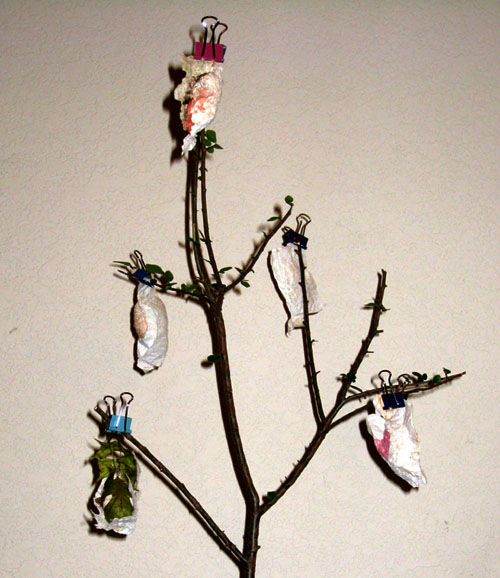Thank you Josephine. We try again:
On May 18, 2009, she gave me three chrysalidae cocoons and two large fifth instar caterpillars just about to make its cocoon. She provided a plastic shoebox lined with paper towel and some red oak leaves for food. The three cocoons had already wrapped themselves in paper towels and were pupating when I received them. The two caterpillars were voracious, getting ready to make their own cocoons. Below is a photo and movie of one eating.
May 19, 2009 Voracious eater:
Vocarious eater Movie: Click on movie to play. Note: some browsers may block the movie -- sorry. You have to give permission to view it to your browser.
May 20, 2009 So hungry it eats the leaf petiole and veins:
May 21, 2009 Resting, "fell asleep" in mid bite, getting ready for the big change:
May 22, 2009 3:00 p.m. Starting to spin its cocoon. Notice the silk threads which it wraps around as it rolls and wiggles, pulling leaf and paper towel around it.:
May 22, 2009 3:30 p.m. Cocoon spinning goes fast. All five are now cocooned and hung in a tree to pupate:

Since I had previous raised several types of butterflies, I assumed they should be hung from a branch and would show signs of changes just before they emerged. Because they all wrapped themselves in paper towels, I used the edge of the paper and a spring clip to hang them for their metamorphosis, and put the tree on the patio. I misted it regularly and watched for a sign of change in the cocoons.
Change never came. After a couple months I examined the cocoons. All five had dime-size holes in the bottom where the moths had emerged while I was not watching. I assume all five successfully launched their new lives as moths and flew away.
End part 2. To see the next try, go to part 3 - click here.